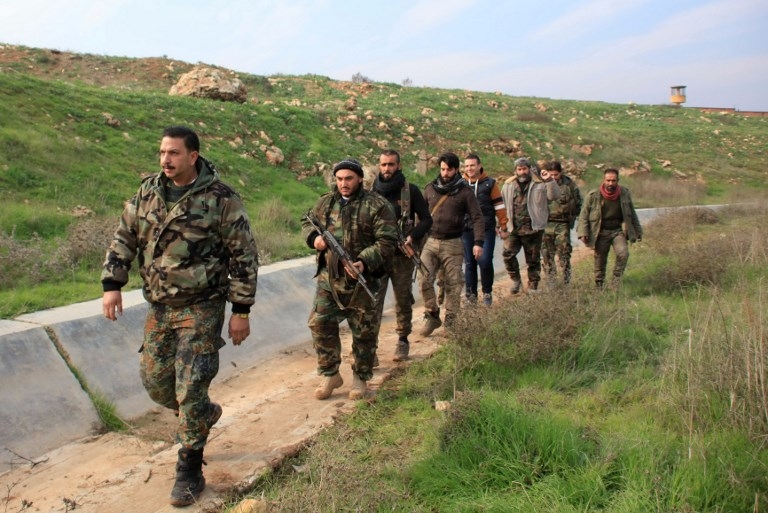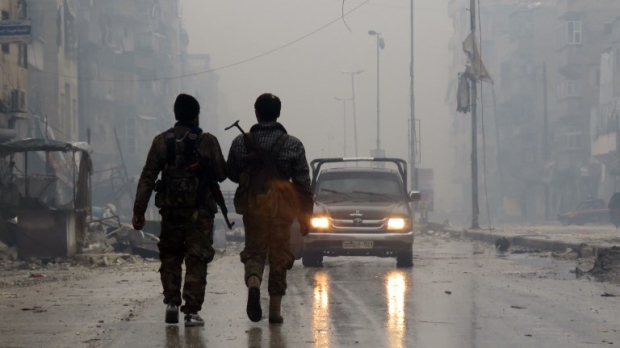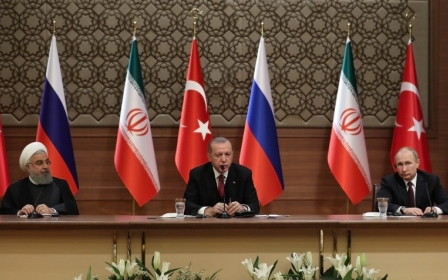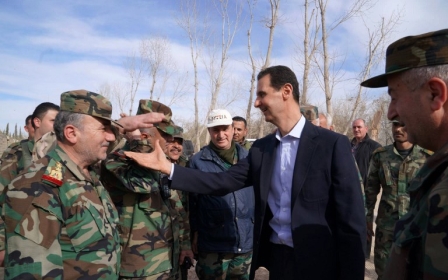Troublesome allies: How the Syrian regime is reintegrating loyalist militias

Feeling emboldened by its military gains, the Syrian regime has started to reassert its authority over loyalist militias to reclaim the state’s monopoly on the use of force. Damascus has reportedly undertaken a number of measures to incorporate pro-regime groups in a unified structure under the command of the Syrian army.
Some loyalist militias have disbanded, and others have been forced to join the regime’s auxiliary forces. In addition to understanding the details of the regime’s reintegration mechanisms, which remain under-studied, it is important to assess the ability of such efforts to support long-term stability in Syria.
The militias' capacity to operate autonomously has rendered it possible for them to engage in criminal fundraising activities, such as trafficking, kidnapping, extortion and looting
Many groups fall under the rubric of loyalist militias. These include groups funded by Iran, such as the National Defence Forces (NDF); groups established by businessmen, such as Rami Makhlouf's al-Bustan; groups funded by religious organisations, such as the Christian Quwat-al-Ghadab; militias established by the Baath party; tribal militias, such as Suqur al-Furat; groups affiliated with military or intelligence units; and foreign militias, such as Hezbollah. These labels are not mutually exclusive, as fighters could belong to more than one category.
Parallel centres of authority
Despite their crucial role in saving the regime from collapse, loyalist militias have been posing major challenges to the authority and stability of the state. Their extensive number and lack of unified management structure has limited the regime’s ability to control them. Their capacity to operate autonomously has rendered it possible for them to engage in criminal fundraising activities, such as trafficking, kidnapping, extortion and looting. They have also been able to establish parallel centres of authority, leading to power struggles and frequent clashes between loyalist militias and regime forces.
The reintegration tactics have been applied very consciously, depending on the conflict dynamics and rivalries on the ground. The criteria used to prioritise certain target groups over others remain unclear. Nonetheless, it appears that most militias are being dissolved for rejecting deployment in another area, competing with more influential groups or figures, or engaging in criminal activities.
Some of the government employees who joined loyalist militias have been requested to return to their normal duties or face termination of employment
Such efforts seem to be taking place in areas that have been secured, making the presence of armed groups obsolete. For example, many of the loyalist militias in the secured neighbourhoods of Barzeh, Ish al-Warwar and Dahiyat al-Assad north of Damascus were dissolved, especially those affiliated with the NDF or the Baath Brigades. Similarly, the regime seems to be disbanding the lion’s share of its militias in the province of Hama after the de-escalation of fighting there.
Once the decision is made to disband a militia, its members are treated according to their legal status. Those eligible for enlistment (males aged 18 to 42) who have not fulfilled their military service obligations are required to join the army. They are typically given a few weeks to a few months to register with their local military recruitment branch.
Auxiliary forces
In some cases, the regime has asked loyalist militias to send eligible members for conscription, without asking the rest to disband. Similarly, some of the government employees who joined loyalist militias have been requested to return to their normal duties or face termination of employment.
As for civilian members, they are forced to either return to civilian life or join the regime’s auxiliary forces. To incorporate the tens of thousands of loyalist combatants into the state’s armed forces, the regime has created volunteer-based military structures, such as the 4th Assault Corps. Local sources say this experiment was not successful, as only a handful of loyalist militias joined - namely in the areas of Hama and Latakia - while the rest continued to operate autonomously.
To overcome that failure, Russia took the lead in creating the Fifth Assault Corps in November 2016. This has been partially successful in increasing the regime’s influence over these troops, which range between 10,000 and 15,000. Likewise, the regime brokered a deal with Iran to bring a substantial number of its militias operating under the umbrella of the Local Defence Forces into the regime’s emergency armed forces.
The regime has also been incorporating some militias into Syria’s security agencies or armed units. All militias in al-Hamah and Qudsaya in rural Damascus, for example, were requested to join the 101st brigade of the Republican Guard.
Superficial mechanisms
Such mechanisms have allowed the regime to incorporate a sizeable number of loyalist militias within the state’s auxiliary forces. Nonetheless, these efforts rely on short-term, superficial mechanisms to change the brand of the targeted militias, rather than institutionalising them. Most militia fighters have been incorporated within auxiliary and emergency forces, rather than regular forces, without any concrete follow-up plans for the future.
Likewise, many targeted militias have been co-opted on the unit level rather than on the individual level, which has failed to transfer their loyalty from their backers to the state. Reintegration efforts are largely being led by foreign states, namely Iran and Russia, which will continue to destabilise Syria by turning its armed forces into another field of rivalry.
Without transformative political and institutional reform, efforts to co-opt loyalist militias by regime forces, which played a significant role in creating the Syrian conflict, will continue to undermine Syria’s stability rather than enhance it.
- Haid Haid is a Syrian columnist and research fellow at ICSR, Chatham House and Atlantic Council. His research topics include security policy, conflict resolution, Kurds and Islamist movements. He tweets @HaidHaid22
The views expressed in this article belong to the author and do not necessarily reflect the editorial policy of Middle East Eye.
Photo: Syrian soldiers and local pro-government fighters patrol the Handarat region, north of Aleppo, after recapturing the area on 31 December 2014 (AFP)
Middle East Eye propose une couverture et une analyse indépendantes et incomparables du Moyen-Orient, de l’Afrique du Nord et d’autres régions du monde. Pour en savoir plus sur la reprise de ce contenu et les frais qui s’appliquent, veuillez remplir ce formulaire [en anglais]. Pour en savoir plus sur MEE, cliquez ici [en anglais].






